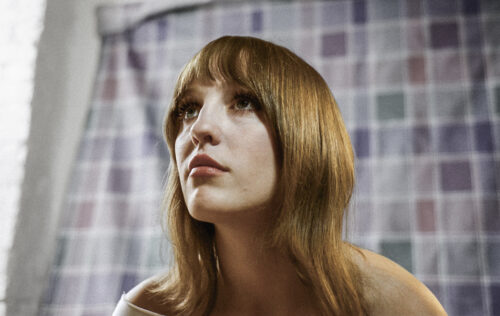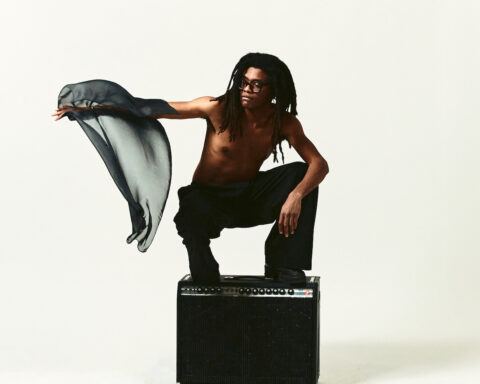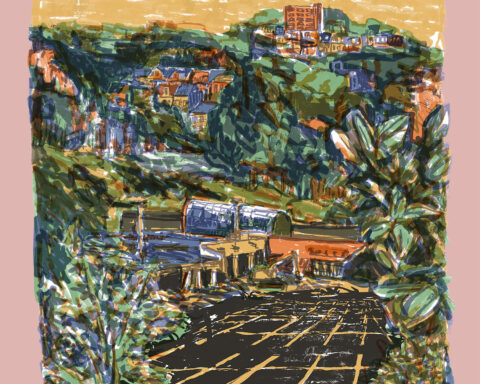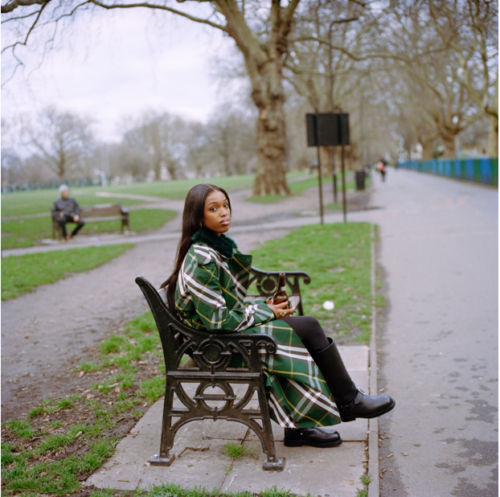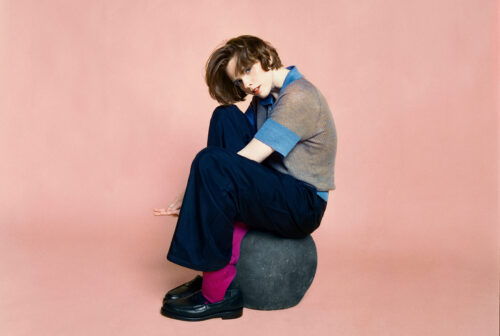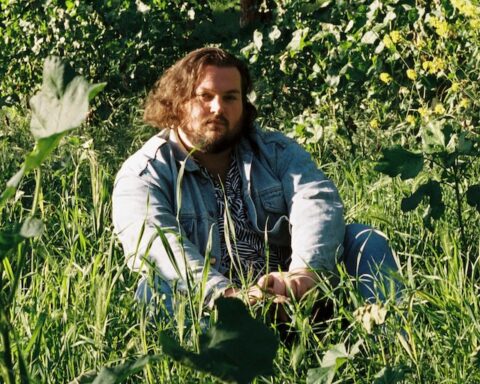Anastasia Coope releases Darning Woman, her debut full-length for Jagjaguwar. The record is a rich tapestry of surrealist psychedelia hailed by The Wire as “an album you can almost feel around you.”
The record’s focus single and title track, ‘Darning Woman,’ also sees release today with a visually stunning music video, directed by Grace Conrad. Like the album’s debut video, ‘He’s On His Way Home, We Don’t Live Together,’ the ‘Darning Woman’ video invites listeners into Coope’s deeply imagistic world, informed by her practice as a visual artist. Watch here.
Darning Woman’s debut single, ‘He’s On His Way Home, We Don’t Live Together,’ was released in February to acclaim from FADER, NYLON, and Paste, which all featured the track in their weekly “best songs” coverage. ‘Woke Up No Feet’ and ‘Sorghum’ followed, with the FADER applauding Coope’s “[use of] repetition as a disarming tactic whereby the meanings of her words fade until all that’s left is the phonetics.” Coope discusses her unique approach to vocal layering in a new interview with Paste here.
Darning Woman evokes a precipice beyond the material world. Like a dispatch from another past, or a memory pressing up against the veil, it’s unmoored in space and time: ghostly, spectral, far-out folk. Here, Coope creates whirling layers of expressive, stratified vocals, suggesting lost lullabies contorted into alluringly strange, staccato shapes.
Born to an English father and American mother (whose original Martin acoustic she uses to compose), the 21-year-old, Brooklyn-based artist was raised in the village of Cold Spring, NY— and indeed, the Hudson Valley’s wintry landscapes and small towns feel present in Darning Woman’s isolated tones.
The album’s creation was largely insular. While staying at a relative’s vacant home in Beacon, NY, Coope began experimenting with recording software in the empty living room, singing into the open space. Until then, she’d only thought of herself as a visual artist, but in that moment, she saw how the practice of music-making could serve as an extension of her core practices of writing, drawing, and painting. Throughout the next year, she taught herself to sing in different styles, hocketing and layering her voice to construct vast, sweeping choirs.
“I was able to envision a room of things happening, rather than me just building something,” Coope says. “This record was me starting to think spatially about music.”
As such, her songwriting revolved around intuition and aesthetics, rather than precise lyrical storytelling. Throughout Darning Woman, Coope invokes a sense of movement through the use of makeshift mantras: the word ‘woman’ appears repeatedly throughout the album’s song titles. For Coope, it was an unconscious motif.
“On this album, the word ‘woman’ represents the idea of a muse, or an idol, or an icon,” she says. “It was a mixture of the maternal with the idea of a character, a star.”
A slew of cultural touchstones ultimately informed Coope’s approach to music making: the avant-garde art-rock of the ‘80s; Trish Keenan or Su Tissue or Brigitte Fontaine; medieval choruses and church choirs; contemporary folk; the romantic close-harmonies groups of the ‘50s; Meara O’Reilly’s Hockets for Two Voices.
Like her paintings, drawings, and mixed media artworks, Anastasia Coope’s songwriting yields an esoteric distance. It’s the feeling of the work pushing back on you, inviting you to see and feel, rather than know. Yet, for all that’s arcane here, Darning Woman is rooted deeply in the things we can touch.
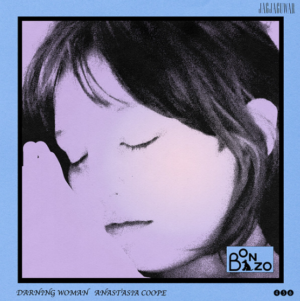
ONLINE:
